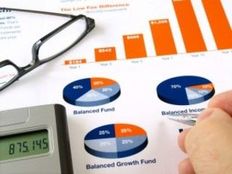
One of the key ways that bond fund investors reduce the returns they get on their bond funds is from paying more in taxes than necessary. Although it is often impossible to avoid taxation on these funds, there are many strategies available that you can use to reduce the amount of interest and/or capital gains that you must report from these funds.
Smart investors who use these tips will be happier with the numbers they see on their 1099-INT forms each year. You can do the same by following the tax tips highlighted below.
Be sure to also see the Ultimate Guide to Bond Fund Investing.
Embrace ETFs
Although exchange-traded funds can still generate taxable interest in the same manner as an open-ended mutual fund, they usually have little to no turnover on an annual basis. This means that they will not have capital gains to pass on to investors like their open-ended cousins.
Be Aware of Potential Gains

If you decide to move from one bond fund to another, remember that any appreciation in the share price of the previous fund will show up on the 1099-B form for that year. This can be a possibility in a declining interest rate environment where you decide to move from a fund paying decreasing levels of interest to another fund with a higher yield.
Look to Municipal Bonds
If you are in one of the top two tax brackets, then you will probably come out ahead by investing in mutual funds that hold municipal issues from your state and/or locality. National muni funds will pay interest that is free from federal tax, but funds that focus on your domicile may have no tax liability at all. Your tax advisor will probably be able to tell you whether muni funds are the right choice for you from a tax perspective.
Harvest Tax Losses
Even if you don’t have any capital gains to report for the year, you can still write off up to $3,000 of ordinary income from selling a losing holding in your portfolio. This can be a stock, bond mutual fund or any other type of security that you hold in a taxable retail account that has depreciated in price since the time of purchase. Be sure to wait for at least 31 days before buying it back in order to satisfy the IRS Wash Sale rule.
Failure to do so will result in the disallowance of the loss on your return. But this can be an easy way to negate taxable interest income as long as you follow the rules.
Use Tax-Efficient Mutual Funds in Taxable Accounts
If you hold bond funds in taxable retail accounts, you can reduce your tax bill by using funds that seek to minimize portfolio turnover that can generate capital losses. This will make a bigger difference during periods of falling interest rates when bond prices will rise in the secondary market.
Don’t Buy in November

Most mutual funds (regardless of what they invest in) distribute the capital gains that they have accumulated over the past year to the current shareholders in the month of November. This means that those who buy taxable funds in this month will get a bill for their share of capital gains that the fund has incurred in the previous 12 months, even though they didn’t own the shares at that time.
It is therefore wise to wait until December to make material purchases of shares in a retail account.
Use IRAs, Retirement Plans and Variable Annuities
Any type of retirement account that grows tax-deferred, such as a traditional or Roth IRA or employer-sponsored retirement plan such as a 401(k), 403(b) or 457 plan will eliminate tax liability for interest and capital gains. However, all income that is drawn out of traditional plans and accounts will be taxed as ordinary income, so any interest that is paid to you from bond funds via distribution will still be taxed. But any income that is reinvested into these funds is not reportable as such.
Bond fund subaccounts that are housed inside variable annuity contracts are likewise shielded from taxation, regardless of whether the contract is purchased with qualified or retail dollars. The same tax rules apply to distributions from these vehicles as for traditional retirement plans and accounts.
Lower Your Cost Basis Through Dividend Reinvestment
If you own an income fund that pays both interest and dividends, you can receive the interest as current income and reinvest the dividends in order to purchase additional fund shares. The dividends that are reinvested will also increase the cost basis of your fund, which will reduce any amount of capital gains that are realized when the time comes to sell your shares.
Which Basis Reporting Method Is Best?
Be sure to keep written records of all of your fund purchases so that you know how much you paid for each and every share. When you sell your shares, you will (at least initially) have five methods of basis computation to choose from in order to determine your taxable capital gains. The five methods are:
- FIFO (First In, First Out) – This is perhaps the most common method of calculating fund basis for shareholders. If you sell 500 shares of your bond fund, then your sale price will be netted against the price per share you paid for the first 500 shares that you bought.
- LIFO (Last In, First Out) – This method may result in a lower current taxable capital gain (at least in the first year that it is used) than FIFO. In this case, the shares that you sell are netted against the most recent equal block of shares that you bought.
- Dollar Value LIFO – This method matches the most recent equal dollar amount of funds purchased against the sale.
- Average Cost – An average cost of all shares purchased is calculated and used as the cost basis for all future sales.
- Specific ID – A specific block of shares that were purchased is netted against the shares that are sold. This method is often used when either a minimum or maximum amount of gain is sought.
The Bottom Line
There are many ways that you can reduce the tax liability for bond funds that you own in taxable accounts. These funds can generate capital gains as well as interest or dividends in many cases, all of which can add more to your tax bill than they have to if you don’t follow these steps to reduce your exposure. For more information on income taxes and how they can impact your investment income visit the IRS website.
If you’ve enjoyed this article, sign up for the free BondFunds.com newsletter.






